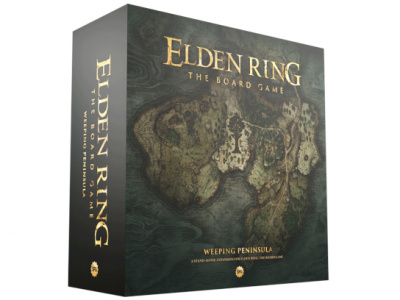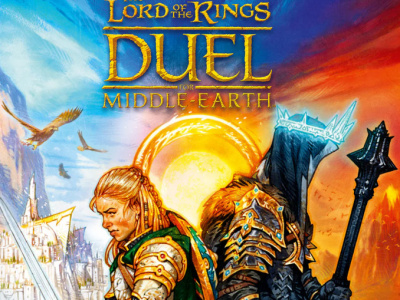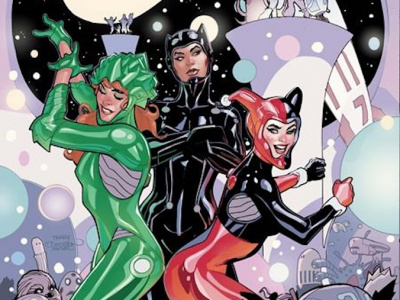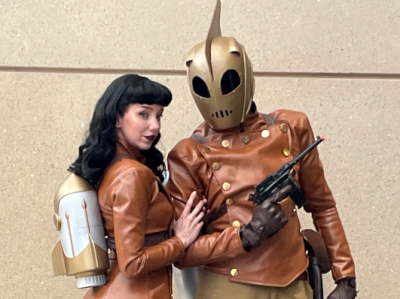 Graphic Ink: The DC Comics Art of Frank Quitely HC
Graphic Ink: The DC Comics Art of Frank Quitely HCPublisher: DC Comics
Release Date: June 2014
Price: $39.99
Creator(s): Frank Quitely, Scott Nybakken (Editor)
Format: 370 pgs., B&W and Full-Color, 9"x12", Hardcover
ISBN: 978-1-4012-4840-6
Age Rating: 14 and up
ICv2 Rating: 3 stars
With the publication of Graphic Ink, Frank Quitely joins Jim Lee in the ranks of having an entire volume devoted solely to his DC Comics' artwork. While Lee's DC and Wildstorm art was published by Titan Books, Quitely's has been collected instead by DC itself, yielding a hefty tome that encompasses Quitely's work for DC, Vertigo, and Paradox Press. Yet, although DC promotes the book as including "never-before-reprinted works," it is anything but all inclusive of Quitely's varied and diverse career for the publisher. As a result, there are some important exclusions as well as artistic revisions to the original works that raise more questions about Quitely's career than are answered in the artist's own, extremely short afterword.
Included in Graphic Ink are some definite Quitely gems that fans can truly appreciate. Even though Quitely first entered comics through his self-published zine Electric Soup in Scotland and debuted his American work in the pages of Dark Horse Presents, Graphic Ink jettisons a chronological approach to Quitely's work and opts instead for one selected rather haphazardly. For example, the book opens with his "The Physicist and the Flying Saucer," which was originally published in The Big Book of Conspiracies in 1995; however, this neglects Quitely's very first work for DC Comics--"The Choking Doberman," which appeared in The Big Book of Urban Legends in 1994. While the story was only a one-pager, it is a hallmark in Quitely's development from the cartoonish exploits of the "The Greens" in Electric Soup and the more refined style he developed in the pages of Judge Dredd Megazine and Dark Horse Presents in 1993-1994.
Despite this omission, DC does include Quitely's other Big Book stories from 1995-1997, which were largely biographic sketches done in black and white. Interspersed with these, however, are full-color tales such as Quitely's second collaboration with Grant Morrison, "New Toys;" various covers for DC and Vertigo properties; Quitely's stint with Warren Ellis' Transmetropolitan; and shorter comics for Vertigo's anthology series.
Strangely enough, Quitely's three-issue run with Jamie Delano on Vertigo's 20/20 Visions is noticeably absent in this early period. Also, while DC obviously wants readers to buy the 2012 Flex Mentallo Deluxe Edition, the absence of any interior pages from this long out-of-print series is regrettable.
Apart from the reprinting of Paradox Press' Big Book series, the other inclusions, while celebrated, are items readers can easily find in back-issue bins and other trade volumes. Although DC can be commended for reprinting Quitely's Batman The Scottish Connection in its entirety, it too, while out-of-print, can be obtained along with his work on The Invisibles. Yet, for every reprint there is the exclusion of interior pages from The Authority in favor of a selection of cover images, or the complete lack of his American Virgin cover work.
The size of Graphic Ink, however, does allow readers to appreciate the sheer beauty of Sandman Endless Nights and Quitely's vivid watercolors. It is bizarre, too, that DC would opt to reprint selections from Quitely's run on Batman & Robin over pages from All-Star Superman or We3.
What is truly lamentable though is the all-too-brief Afterword provided by Quitely. Serving more as an introduction than as an artist's reflection on his career for DC Comics, Quitely's words are little more than mere sound bites culled from various interviews the artist has previously done. Unfortunately, Quitely is guilty here of historical revisionism. In the Afterword, Quitely states the "…more focused approach to solving the challenges of storytelling at the initial thumbnail stage led me to accept the assistance of inkers on The Invisibles and The Authority. DC was happy because I was producing more pages, and I was happy because I was spending more time on the visual interpretation of the story than on its final polish."
In several interviews, however, Quitely has publicly lamented the role of inkers and colorists, stating "It's actually much easier for me to look at those pages (Sandman Endless Nights) then [sic] it is to look at Flex or 20/20 Visions or Batman or JLA or The Authority or The X-Men or any of the other things that somebody else has colored or that somebody else has inked on with a lot of them" (Quitely, interviewed by George Khoury, True Brit, TwoMorrows, 2004).
In fact, if Graphic Ink could be improved, it would be the inclusion of other voices alongside Quitely's. Since Quitely has worked extensively with colorists Matt Hollingsworth, Peter Doherty, and Jamie Delano throughout his career and in his move from traditional pencil and inkwork into the digital realm of the Cintiq, insight and comments from his collaborators on his artistic evolution would only improve the book. Considering Doherty was brought in to recolor the entire Flex Mentallo from the originals by Tom McCraw, and Quitely has moved more and more to coloring his own cover work, the addition of these voices would lend greater value to Quitely's own achievements.
Additionally, since Quitely has worked with some of the most popular and critically-acclaimed genre writers such as Morrison, Mark Millar, Mark Waid, and others, shorter blurbs from them about Quitely's prowess as an artist would be welcome. And, unlike the Jim Lee collection, none of the images included in Graphic Ink are pictures true Quitely-philes have not seen before--there are no sketches, no preliminary pictures, nothing that illustrates Quitely's all-important artistic process in rendering such memorable images. Although more than simply a collection of pretty, previously published pictures, the lack of these items calls into question DC's claim that Graphic Ink is "the full scope of his pictorial achievements."
Despite these limitations, the format and paper quality reflect the intricate beauty of Quitely's line art. For readers who have not experienced Quitely's work in DC's Absolute editions, particularly his Absolute All-Star Superman, Graphic Ink is the next best thing. While he is often praised for his superhero work and rightly so, his early work for Vertigo's weird and odd anthology comics and DC's Batman The Scottish Connection stand the test of time.
--Nathan Wilson







